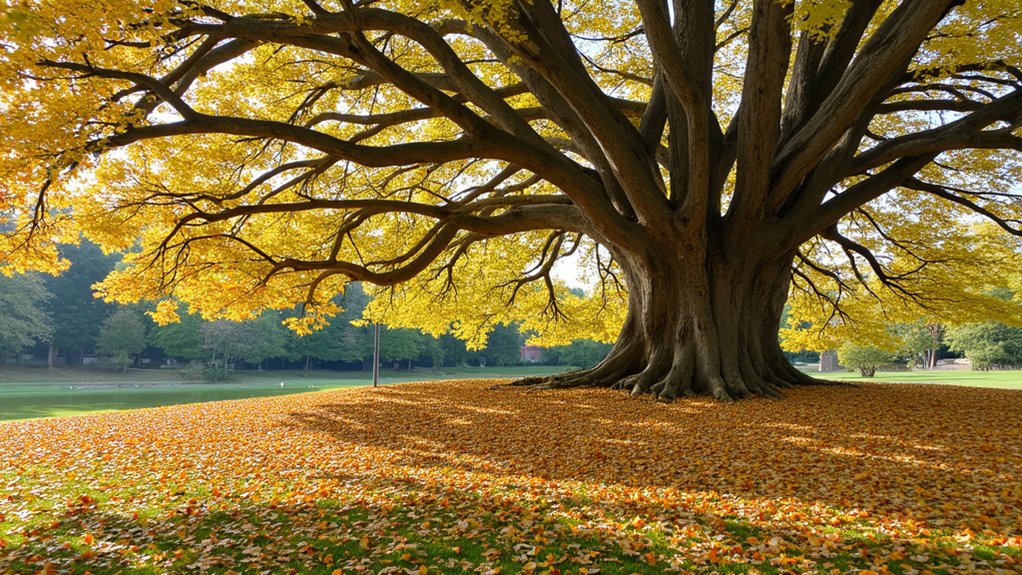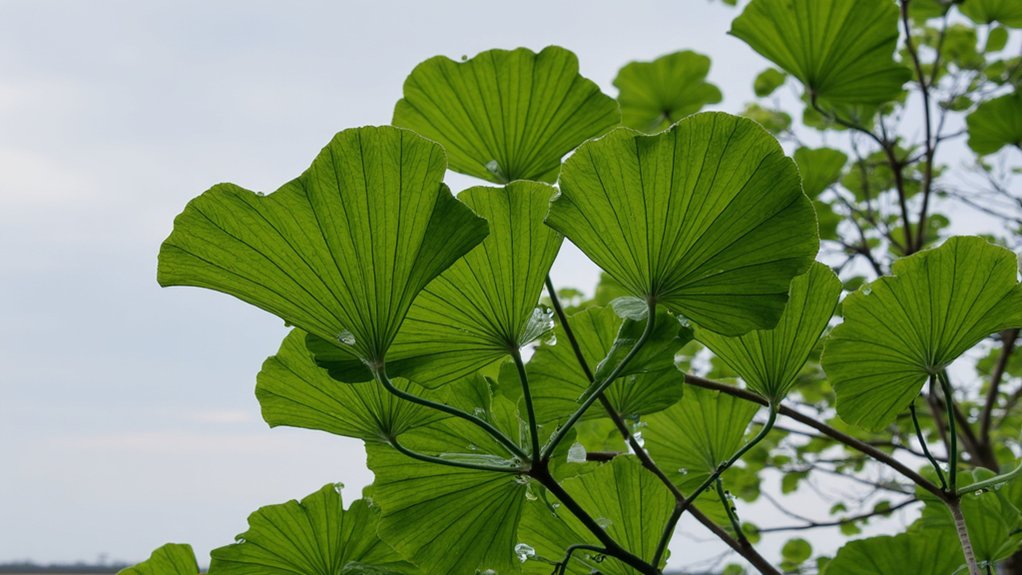While you might think ancient plants have little relevance to modern life, these botanical time travelers have quietly perfected survival strategies over 300 million years that we’re just beginning to understand. You’ll find their secrets particularly fascinating, from the Ginkgo biloba’s remarkable resistance to nuclear radiation to the horsetail’s ability to survive in toxic soils. These living fossils hold solutions to today’s environmental challenges, and their most valuable lessons are hidden in plain sight.
Contents
- 1 Living Fossils: Meet Earth’s Oldest Plant Species
- 2 The Remarkable Resilience of Ginkgo Biloba
- 3 Ancient Survival Strategies That Still Work Today
- 4 Why Some Plants Resist Evolutionary Change
- 5 Secrets of Plant Longevity Through the Ages
- 6 Learning From Nature’s Time-Tested Champions
- 7 Modern Applications of Ancient Plant Wisdom
- 8 Protecting Future Crops Using Prehistoric Insights
- 9 Climate Change Lessons From Prehistoric Plants
Living Fossils: Meet Earth’s Oldest Plant Species

While dinosaurs roamed the Earth millions of years ago, certain remarkable plants from that era continue to thrive today. You’ll find Ginkgo biloba trees, which have existed for over 270 million years, lining modern city streets. These living fossils haven’t changed much since the Permian period.
Horsetails, or Equisetum, have survived for 300 million years and still grow in wet areas across the globe. Their hollow stems contain silica, making them surprisingly tough. You can spot cycads, too – these palm-like plants have remained nearly identical since the Mesozoic era, with some species reaching ages of 1,000 years.
The Remarkable Resilience of Ginkgo Biloba

Although many ancient species have gone extinct, the Ginkgo biloba’s remarkable resilience has allowed it to overcome countless environmental challenges across millions of years. You’ll find these living fossils thriving today, reaching heights of 100 feet and living up to 3,000 years.
What makes Ginkgo so tough? It’s got thick bark that resists disease and fire, while its fan-shaped leaves contain natural antifungal compounds. The trees can even regrow from their stumps, and they’re incredibly pollution-tolerant. Scientists discovered that Ginkgo trees near Hiroshima survived the 1945 atomic blast and continue growing today.
Ancient Survival Strategies That Still Work Today

Despite millions of years of evolution, many ancient plant survival mechanisms remain remarkably effective today. You’ll find examples like the Venus flytrap’s snap-trap system, which closes in just 100 milliseconds, or the barrel cactus’s accordion-like pleats that expand to store water.
These time-tested strategies work so well that modern scientists often study them for biomimicry projects. The lotus leaf’s self-cleaning surface, which repels water and dirt through microscopic bumps, has inspired water-resistant materials. Similarly, the strong adhesive properties of ivy vines have led to developments in new synthetic adhesives.
Why Some Plants Resist Evolutionary Change
The remarkable staying power of ancient plant adaptations points to an intriguing phenomenon in evolutionary biology: some plants don’t need to change much to survive.
You’ll find these “living fossils” in stable environments where conditions haven’t changed dramatically for millions of years. Take the Ginkgo biloba, which has remained nearly identical to its ancestors from 270 million years ago.
When plants develop highly effective adaptations early on, there’s little pressure to evolve further. They’ve already mastered their niche through specialized features like thick protective bark, efficient water storage, or toxin production that still works perfectly against modern threats.
Secrets of Plant Longevity Through the Ages
While many species have vanished over millions of years, plants that achieve remarkable longevity share several key biological traits. You’ll find these ancient survivors possess specialized cell walls that resist decay, along with remarkably efficient DNA repair mechanisms that prevent genetic damage.
These plants have also mastered the art of resource conservation. They’ll often grow slowly, using minimal energy, and can shift into dormant states when conditions aren’t ideal. Their robust root systems, which can extend up to 150 feet deep, help them access water and nutrients in even the harshest environments.
Learning From Nature’s Time-Tested Champions
Scientists studying ancient plants have uncovered invaluable lessons about survival and adaptation that you’ll find surprisingly relevant today. These botanical survivors demonstrate remarkable strategies we can apply to modern challenges, from drought resistance to pest management.
You’ll notice that ancient plants like ferns and cycads don’t waste energy on showy features. Instead, they’ve perfected efficient systems for water storage, nutrient absorption, and reproduction that have worked for millions of years. Their success comes from maintaining flexible growth patterns while developing specialized defensive compounds.
When you examine their simple yet effective solutions, you’re looking at nature’s blueprint for resilience.
Modern Applications of Ancient Plant Wisdom
Drawing from nature’s ancient wisdom, modern researchers are now adapting prehistoric plant strategies into practical solutions for agriculture, medicine, and sustainable technology. You’ll find these ancient innovations in today’s drought-resistant crops, which mimic the water-retention techniques of desert-dwelling ferns that have survived for 300 million years.
Scientists are also studying the Ginkgo biloba’s remarkable resilience to develop better preservation methods. The tree’s protective compounds, refined over 270 million years, are inspiring new antifungal medications and natural food preservatives. You can already find these plant-based solutions in organic farming methods and pharmaceutical applications.
Protecting Future Crops Using Prehistoric Insights
As agricultural threats continue to evolve, ancient plants offer vital lessons for protecting tomorrow’s food supply. You’ll find that prehistoric varieties developed remarkable resilience against pests, diseases, and climate extremes over millions of years of adaptation.
Scientists are now mapping these ancient defense mechanisms, which you can apply to modern crop protection. For instance, wild wheat varieties from 10,000 years ago contain genes that resist rust fungus, while 4,000-year-old corn varieties showcase drought-tolerance traits.
Climate Change Lessons From Prehistoric Plants
Living plants from prehistoric times reveal remarkable adaptations that you’ll find invaluable for understanding today’s climate challenges. These ancient survivors, like the Wollemi pine and ginkgo, have weathered multiple extinction events and dramatic temperature shifts over millions of years.
You’ll notice how these plants developed specific traits, such as waxy leaf coatings and flexible growth patterns, to handle extreme conditions. The ginkgo, for instance, can alter its leaf size and thickness based on CO2 levels, while the Wollemi pine’s specialized bark helps it survive both intense heat and freezing temperatures.
